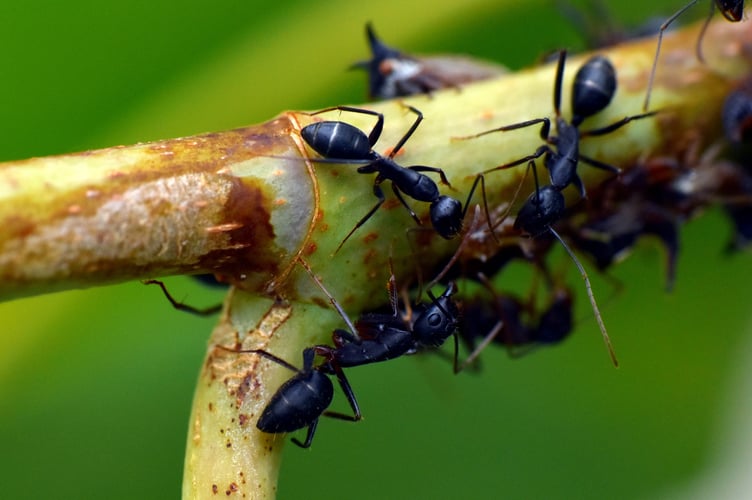Whilst kneeling on an ant’s nest last week – in shorts – and watching them stream over my legs and the lawn, I was reminded that we are nearing Flying Ant Day. Despite still being referred to as a single ‘day’ it’s actually more of a mini-season and can last for several weeks with several peaks during July and early August.
Scientist’s refer to the phenomenon as ‘Nuptual Day’, when the flying ants emerge en mass when a new Queen is ready to start her own colony and leaves the nest accompanied by thousands of hopeful males. The annual ‘royal’ event is also linked to weather conditions and most likely to take place when the temperature is above 25 degrees, with little wind, and a chance of rain in the following days. Although some say the swarming is triggered after rain and in warm, humid conditions.
We tend to start seeing the emergence of flying ants around the middle of July, but often the first wave appears during Wimbledon. As unnerving (or exciting) as it may be to see so many flying ants take to the sky, they are harmless to humans, and beneficial to birds providing an ‘all you can eat buffet’.

Ants (flying or otherwise) are actually beneficial to the garden – although I don’t recommend kneeling on a nest - as they start a new colony, they aerate the soil, recycle nutrients, and are also natural pest controllers, keeping aphids at bay. They will also break down dead small animals, which never ceases to make me shudder to be honest. I recently found a small dead bird that was riddled with ants and wasps – yes, wasps are carnivores too, or technically omnivores.
Earlier this year I remember commenting on the lack of wasps, including last year, but boy, have they made up for it since then. And they seem to be more annoying, intent on causing a confrontation. Like all insects, wasp populations will naturally vary from year to year with warm, dry weather leading to increased wasp activity, while colder, wetter conditions can hinder their development.
A quieter wasp season in 2024 seems to have been followed by a more active one in 2025, as the population rebounds. Apparently, the wasp population in Britain had risen dramatically since 2017 with warmer, drier conditions being cited as the reason.
Wasps start to construct their nests in spring and tend to build and expand until August when theoretically they stop building, as their nests are large enough to stand a chance of surviving winter. With a lack of work and increase in ripe fruit happening at the same time, the wasps then go on a bender during late summer and that’s when they get lairy and argumentative.
Other bitey things that punch above their weight at this time of year are the tiny ‘flower bugs’, which are only twice the size of a full stop. They must be 90% teeth as the bite they inflict is not unlike a horsefly - don’t even get me started on those clowns. Also called ‘no-see-ums’ for obvious reasons, the flower bugs don’t seem to have any reason for biting other than attention seeking. They are particularly active on warm afternoons and seem to prefer slightly sweaty people. Some people react more to the bite than others and may itch or swell slightly.
My brother expressed his surprise at me being bitten at all, adding, “I thought you’d be too bitter for them … ‘
Skin-So-Soft definitely helps to deter these tiny tyrants (flower bugs, not belligerent brothers) but you have to remember to apply it.



Comments
This article has no comments yet. Be the first to leave a comment.